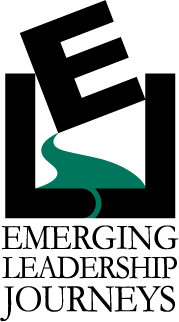| CURRENT ISSUE | |||||
Volume 3, Issue1 | March 2010 | ISSN 1941-4684 |
|||||
|
From the Individual to the World: How the Competing Values Framework Can Help Organizations Improve Global Strategic Performance In a competitive global economy, organizations need to be able to redefine themselves and their strategic visions. However, many change initiatives are unsuccessful due to the lack of consideration for organizational cultural variables. The Competing Values Framework, when used in conjunction with strategic planning, can increase the chances of success. Tools like the Organizational Culture Assessment Instrument and the Managerial Behavior Instrument provide concrete ways to assess where the organization is, where it should be, and realigning the organization from the individual manager to the entire organizational culture. Jesus as Agent of Change: Leadership in John 21 Chapter 21 in the book of John provides a snapshot of Jesus interacting with a few of his disciples, which provides insight into his leadership style and tactics. An inner-textural analysis of the chapter based on socio-rhetorical criticism and the contemporary leadership styles of leader-member exchange, servant leadership, charismatic leadership, transformational leadership, and mentorship, help demonstrate how Jesus changed their lives and guided their ministries. The model assesses the Johannine text in terms of (a) repetitive-progression, (b) opening-middle-closing, (c) narrational, (d) argumentative, and (e) sensory-aesthetic methods. These elements of texture reveal more of the author’s intention for this particular narrative, and provide a deeper understanding of how to apply Jesus’ principles in contemporary organizational leadership. Shared Leadership: Is it Time for a Change? This paper investigates shared leadership and seeks to determine if more organizations should consider adopting a shared leadership model. Leadership affects the success and failure of every type of organization, and the complexity of today’s business environment makes leadership increasingly more challenging. It is becoming more difficult for any single individual to possess all of the skills and abilities required to competently lead an organization today. A review of the literature indicates that while shared leadership has been practiced in some form for centuries, research on the subject is still in its infancy. An abundance of shared leadership studies fall in the domains of healthcare and education, two industries especially open to the concept. Studies outside these two industries are scarce, but include a diverse collection of organization types and groups. While research indicates that shared leadership has its challenges and can be difficult to implement, overall the benefits of shared leadership hold promise. Organizations of all types should take notice and consider implementing a shared leadership approach. Authority in the 21st Century: Likert’s System 5 Theory There is a paucity of research on R. Likert’s System 5 leadership theory as evidenced by only three specific articles on the topic found among several academic databases. While the field of leadership has largely ignored this theory, evidence suggests 21st-century organizational climate in many countries may be ready for this type of approach. R. Likert and Likert (1976) explained that System 5 would resemble Likert’s System 4, but with less hierarchical authority. The following summarizes the available literature on System 5 including foundational material about earlier Likert systems. Recommendations for further study include assessment of the potential viability of this approach for collaborative organizations during the postmodern era. Impact of Cultural Intelligence Level on Conflict Resolution Ability: A Conceptual Model and Research Proposal Cultural intelligence and conflict resolution ability are essential for 21st-century leaders when considering the increased interaction with individuals from different cultural backgrounds that is now prevalent due to the technological advances of the internet and improved modes of mobility. With increased frequent interactions, there is greater opportunity for cultural differences to create conflict. New global skills must be acquired to be an effective leader in the 21st century. In response to literature gaps, this model suggests a 2X2 factorial design to test to see if cultural intelligence levels predict the appropriate conflict resolution strategy adoption, thus the conflict resolution ability. |
School of Business & Leadership | 1000 Regent University Drive | Virginia Beach, VA 23464 | 757.352.4550 |
